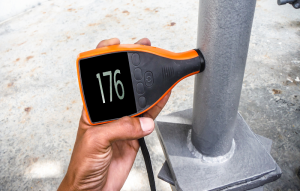Artificial grass is a popular choice for homeowners who desire a low-maintenance yet lush and green lawn all year round. However, proper preparation of your yard before installing artificial grass is crucial to ensure a smooth and successful installation process.
We take you through the steps to properly prepare your yard for artificial grass installation in San Jose, or elsewhere, helping you achieve a beautiful and long-lasting synthetic lawn.
- Clear the Area
Begin by removing any existing vegetation, including grass, weeds, and plants, from the area where you plan to install the artificial grass. Use a garden spade or a turf cutter to eliminate the existing vegetation, ensuring that the surface is clear and even.
- Address Drainage Issues
Proper drainage is essential to prevent water accumulation and maintain the integrity of your artificial grass. Evaluate the yard's natural drainage pattern and make adjustments if necessary. Ensure that the surface slopes away from your house or any nearby structures to avoid water pooling. Install a perforated pipe or a French drain system if additional drainage is required.
- Compact the Soil
Once the area is cleared and drainage issues are addressed, it's important to properly prepare the soil. Compact the soil using a vibrating plate compactor to create a firm and stable base for the artificial grass. This will help prevent future sinking or unevenness of the synthetic turf.
- Install a Weed Barrier
To prevent weed growth through your artificial grass, lay a weed barrier fabric over the compacted soil. This will act as a barrier, inhibiting the growth of unwanted vegetation. Trim the fabric to fit the area, ensuring complete coverage.
- Add a Base Material
To further enhance the stability and drainage of your artificial grass, add a base material layer on top of the weed barrier. Common base materials include crushed rock or decomposed granite. Spread the base material evenly and compact it using a vibrating plate compactor. Aim for a thickness of about 2-3 inches, ensuring a solid and level surface.
- Add a Layer of Fine Aggregate
To achieve a smooth and level surface for your artificial grass, add a thin layer of fine aggregate, such as sand or grit, over the compacted base material. Spread the fine aggregate evenly and use a garden rake to ensure a uniform surface.
- Apply a Geotextile Membrane
For added stability and to prevent any potential movement of the artificial grass, consider applying a geotextile membrane over the fine aggregate layer. This will act as an additional barrier, ensuring a secure and long-lasting installation.
- Compact and Level the Surface
Before installing the artificial grass, use the vibrating plate compactor once again to compact and level the fine aggregate layer. This will create a solid and smooth surface, ensuring optimal performance of the synthetic turf.
- Install the Artificial Grass
Finally, it's time to install the artificial grass. Follow the manufacturer's instructions, carefully unrolling and positioning the synthetic turf over the prepared area. Trim any excess material and ensure a snug fit. Depending on the size of the area, you may need to join multiple pieces of artificial grass using adhesive and seam tape.
Conclusion:
Properly preparing your yard before artificial grass installation is essential for achieving a beautiful and long-lasting synthetic lawn. By following these steps to clear the area, address drainage issues, and properly compact the soil and base materials, you can ensure a solid foundation for your artificial grass. Taking the time to prepare your yard correctly will result in a stunning, low-maintenance, and durable lawn that you can enjoy for years to come. Whether it is about prepare the yard, or your outdoor space for installing concrete driveways in San Jose, the better and informed you prepare, the better the end result will be.





